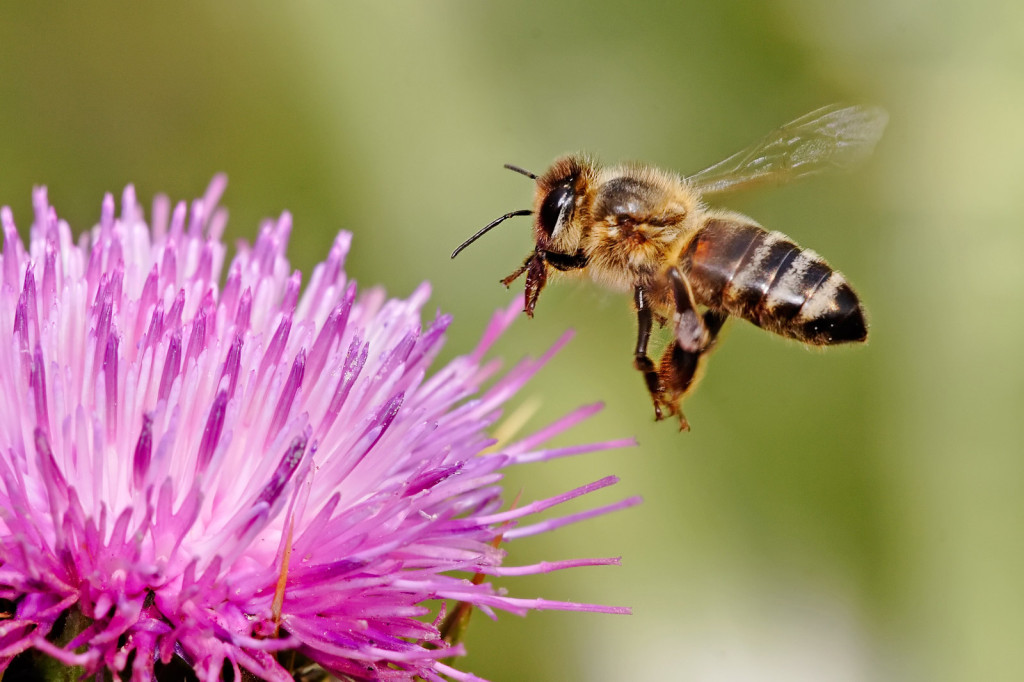UNIBUG forum features keynote speaker Elizabeth Elle
By Angela Espinoza, News Editor
The User Network for Insect Biology in the Urban Garden (UNIBUG) is set to host its first public forum of the year on March 29. With an early reception at 9 a.m., the forum itself will be taking place from 10 a.m. to 12 p.m. in room 2201 at the New West campus. To tell us more about the event, we interviewed UNIBUG project coordinator and urban ecology technician Dr. Veronica Wahl.
UNIBUG, which grew from 30 volunteer candidates to 300 volunteer candidates since its inception, is a project started by Wahl through Douglas College. The purpose of the project is to get people involved with the nature that occurs in cities. Where the project initially began with monitoring bugs (such as beetles) that hunt pests, it’s since grown to include monitoring pollinators, from hummingbirds to butterflies to the many types of bees—bees being this forum’s focus. With various bee populations in danger of extinction, a major part of this forum will be learning how to make small nests for bees to safely lay and hatch eggs, called “bee houses.”
“We’re going to have a tutorial on how to make your own bee house,” Wahl explains, “and we’ve got some supplies so people… will have enough to get them started.”
The process of making bee houses involves the crucial step of making tight, paper tubes by hand. “The important thing is making these tubes correctly, because [the female bee] is laying her eggs, and because it’s so important to their lifestyle, and because she’s working herself to death, she’s very careful that she picks a good tube. And they actually have researched that she actually goes and she checks out a whole pile of tubes and picks her tube.”
From there, attendees will be provided with two litre pop bottles. Painting the bottles is necessary to keep sunlight out, and will also allow the makers to get creative. The capped end of the bottles will be cut off, and the tubes will then be placed into the bottles. Afterwards, once the bottle is reasonably full, bubble wrap will be placed inside to keep the tubes from moving around, protecting the baby bees from strong winds.
“Then people can take [the bee houses] home and put them out. And what we’re asking people to do is, three times between now and the fall, to take photos of them and say [how many tubes to bees they have]… so we can add it to our big collage and get information that way,” Wahl adds.
Wahl went on to explain that the bee houses are primarily for bees that do not reside in hives. Rather, these are bees that make their own mini-hive of sorts, laying only their eggs and feeding only their young in, for example, a bamboo stem.
“[W]hen you talk about bees, most people think of bees as they live in a hive, they make honey, they’re all in a big colony, right? That’s actually the minority of the bees, and the majority of the bees that will pollinate in your yard are not those bees at all. It’s the mason bees and what we call solitary bees,” Wahl elaborated.
Prior to the bee house tutorial, there will be a keynote presentation. In years past, typically two keynotes were asked to present, but the addition of the bee house tutorial was felt to be necessary, as it provides attendees with a hands-on lesson on how to preserve an important part of nature.
“We’re going to have [Dr.] Elizabeth Elle as our keynote speaker. She’s chair of biology at SFU, and she’s a pollinator expert,” Wahl says. “People don’t have to be worried because… she’s one of the best people at taking scientific information and presenting it in a way that anyone can understand it and find entertaining. She knows all about bees and pollinators and what’s happening to bee populations.”
In addition, a detailed introduction to UNIBUG, results from the previous year’s work, door prizes, new volunteer opportunities, and volunteer appreciation will occur during the forum. Another important note is that once the bee houses are made and taken home, they can be reused to house more bees in the future. Wahl also pointed out that wooden bee houses can be made for more durability, although building one is a process that would take more than an hour-long tutorial to go over.
